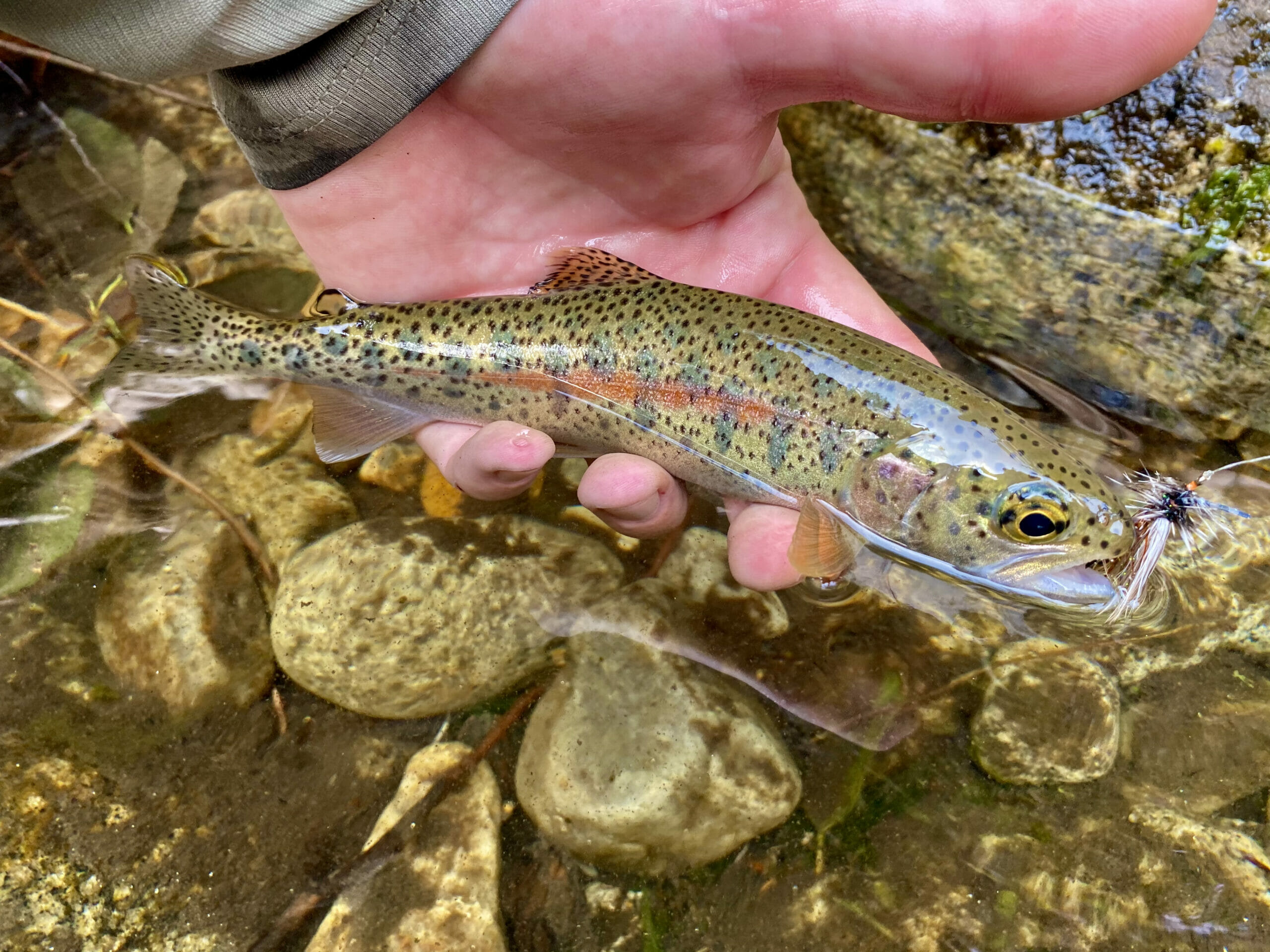Redband trout (Oncorhynchus mykiss sub-species)
Species summary and status: Redband trout are subspecies of rainbow trout and exist in two well-defined geographic regions. The Columbia River redband trout is found in Montana, Washington, and Idaho, and the Great Basin redband trout is found in southeastern Oregon and parts of California and Nevada. The redband is similar in appearance to the rainbow trout but has larger, more rounded spots and parr marks that remain into adulthood.
They generally do not grow larger than 10 inches. Redband trout that live in streams tend to have profuse large spots over their bodies and fins (except pectoral) and frequently have an orange cutthroat mark under the jaws. They have a rosy red stripe along the lateral line to a brick red lateral band (especially in spawning males) and tints of yellow or orange along the ventral region. Gill covers can also be brilliant red.
Native populations of redband trout provide diverse and popular recreational angling opportunities. Their willingness to take a variety of fishing gear, impressive fighting ability when hooked and spectacular appearance contribute to their popularity. Special regulations for waters possessing redband trout balance angling opportunities with conservation needs to ensure sustainable populations.
Interior redband trout historically occupied portions of major river basins that were considered outside the range of anadromy in six states—Nevada, California, Oregon, Washington, Idaho, and Montana. They once occupied an estimated 60,295 km of stream habitat and 152 natural lakes in habitats in the drainages of the middle and upper Columbia River basins, the Kootenai-Pend Oreille, Spokane Basin, the Snake River Basin, the Oregon Closed Basin, the Klamath-northern California coast basin, the Sacramento Basin, and the north Lahontan Basin. Redband trout currently occupy an estimated 25,417 km of stream habitat (42% of their historical range) and 124 lakes, or reservoirs.
Looking forward: Habitat degradation and fragmentation as well as nonnative species introductions and climate change impacts are the primary threats to redband trout populations.
The introduction and subsequent spread of nonnative trout and other fishes are a significant longterm threat to redband trout. Across the range of redband trout, brook trout, rainbow trout, brown trout, cutthroat trout, smallmouth bass, common carp, and other non-native fish species have become established following intentional stocking or invasion. These non-native fishes present a wide range of threats to redband trout, including competition, hybridization/introgression, and predation. Non-native fish, represented by one or more species, co-exist with redband trout in 13,490 km (53%) of stream habitat.
The overall goal of redband trout conservation and restoration is to ensure the longterm persistence of self sustaining populations across the species’ native range.
Between 2007 and 2020, the Western Native Trout Initiative contributed over $1,242,373 to 36 projects benefiting redband trout, including catalyzing and leading the effort to complete the first range-wide assessment and status review mentioned above. Other funded projects have been diverse, including: genetic analysis, telemetry surveys, culvert renovation, levee removal, road relocation, fish ladders, fish screens, streambank stabilization, large watershed improvement projects and outreach/education efforts.
All data compiled from:
Western Native Trout Initiative



